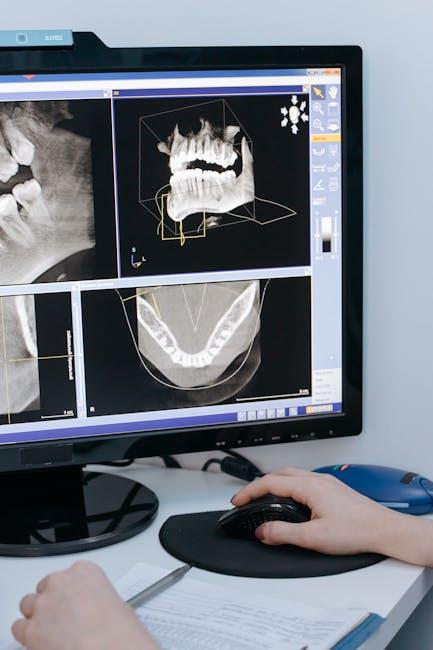
Meaningful Induction: Key Considerations for Oral Healthcare Teams – Nature
Effectively integrating new members into oral healthcare teams is pivotal to ensuring high-quality patient care, seamless collaboration, and long-term staff satisfaction. Meaningful induction goes beyond the basic orientation—it lays the foundation for trust, engagement, and professional growth within dental practices. In this comprehensive article, we explore the essentials of meaningful induction for oral healthcare teams, highlighting best practices, practical tips, and real-world benefits that organizations in dentistry can harness to build stronger, more resilient teams.
Why Meaningful Induction Matters in Oral Healthcare Teams
The oral health sector demands precise communication, teamwork, and consistent adherence to protocols. A tailored induction process ensures that new dental practitioners, hygienists, assistants, and administrative staff clearly understand their roles and feel confident contributing immediately. Key benefits of meaningful induction include:
- Improved Employee Retention: Engaging and supportive onboarding reduces early turnover.
- Enhanced Patient Care: Reduces errors and elevates standards through effective training.
- Stronger Team Dynamics: Builds professional relationships and clarifies communication channels.
- Compliance and Safety: Ensures adherence to health regulations and workplace safety protocols.
Key Considerations for a Meaningful Induction Process
1. Personalized Onboarding Plans
Each member of an oral healthcare team may have varied skill sets and responsibilities. Craft individualized induction plans that correspond to the specific role—whether that’s dental nursing, clinical assisting, or admin support. This personalization helps maintain relevance and boosts engagement.
2. Incorporate Mentorship and Buddy Systems
Pairing a new team member with an experienced team member accelerates learning and encourages cultural integration. Mentorship provides a safe environment for asking questions and promotes a sense of belonging.
3. Provide Clear Role Expectations and Goals
Clearly outlining job responsibilities, clinical expectations, and key performance indicators prevents confusion and establishes measurable success benchmarks. Transparent communication reduces anxiety common in new hires.
4. Include Hands-On Training and Practice
Practical, hands-on experience with equipment, software, and patient interaction should be integrated throughout the induction period. This helps build competence and confidence faster than theory alone.
5. Emphasize Communication and Team Culture
Encourage openness and regular feedback. Introduce new members to team values, communication protocols, and interdisciplinary workflows to build cohesion.
6. Use Technology and Digital Resources
Leverage learning management systems, interactive modules, and video tutorials to supplement face-to-face training. These tools cater to different learning styles and allow on-demand review.
7. Monitor Progress and Provide Feedback
Set regular check-ins to discuss progress, challenges, and goals. Constructive feedback nurtures growth and identifies any additional support needs early.
Benefits of a Well-Structured Induction for Oral Healthcare Teams
| Benefit | Impact on Dental Practice |
|---|---|
| Faster Competency Development | New staff quickly become productive and confident. |
| Reduced Turnover | Saves recruitment costs and maintains team stability. |
| Improved Patient Satisfaction | Consistent care practices boost patient trust and loyalty. |
| Enhanced Team Morale | Engaged staff contribute to a positive workplace. |
Practical Tips for Implementing Meaningful Induction
- Start Before Day One: Send welcome packets and introductory videos ahead of time.
- Schedule Structured Sessions: Balance formal training with informal introductions and socialization.
- Document the Process: Use checklists and digital tools to track induction milestones.
- Solicit Feedback: Ask new hires for input on their induction experience for continuous improvement.
- Celebrate Milestones: Acknowledge completion stages like probation and first patient treatments.
Case Study: Transforming Induction in a Busy Dental Clinic
Dr. Lee’s dental clinic in Seattle revamped their induction program by introducing peer mentorship, digital learning modules, and a 30-day structured onboarding timeline. Within 6 months, new staff turnover dropped by 40%, and patient feedback reflected smoother appointment experiences. This holistic approach also fostered closer interdisciplinary collaboration between dentists, hygienists, and receptionists, showcasing how meaningful induction transforms team performance.
Firsthand Experience: A Dental Hygienist’s Perspective
“When I first joined my practice, the induction process felt rushed and impersonal. After recent improvements, new hires now have mentors and a clear schedule that guides them through learning clinical equipment and office culture. This made me feel supported and valued right away, which helped me settle in quickly and focus on delivering quality care.” – Sarah M., Registered Dental Hygienist
Conclusion
In the dynamic field of oral healthcare, meaningful induction is foundational for building effective, cohesive teams capable of delivering exceptional patient care. By tailoring onboarding experiences, embedding mentorship, emphasizing communication, and leveraging technology, dental practices can significantly enhance staff satisfaction, retention, and productivity. Investing time and resources into a structured, thoughtful induction process ultimately benefits the entire practice ecosystem—from individual team members to the patients they serve.


